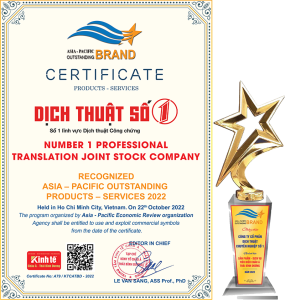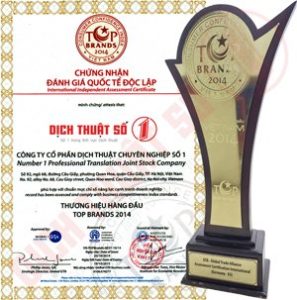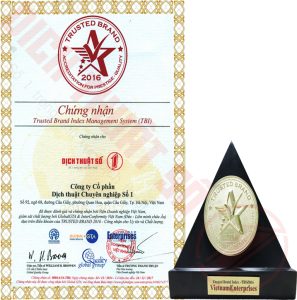Medical device translation is big business. In the EU, the medical device business is worth €95 billion a year and employs around 570,000 workers. The region has 24 official languages. Twenty-eight countries are members of the European Union. That is why the demand for medical device translation in the EU is so high. However, the EU has industry standards that also affect the translation of documents in this field.

Medical devices include a wide range of materials, including wound dressings and pacemakers. The documentation for each of these materials is extensive. The term “labeling” in this field refers to advertising and marketing materials, instructions for patients and physicians, and product labeling and packaging. It also includes support and training materials for laboratory technicians, physicians, other health professionals, caregivers, and patients, and materials that clearly describe each device for anyone using it.
Medical devices include a wide range of materials, including wound dressings and pacemakers. The documentation for each of these materials is extensive. The term “labeling” in this field refers to advertising and marketing materials, instructions for patients and physicians, and product labeling and packaging. It also includes support and training materials for laboratory technicians, physicians, other health professionals, caregivers, and patients, and materials that clearly describe each device for anyone using it.
Medical Device Industry
This industry includes all manufacturers of a wide range of products that serve people with a variety of health care needs. In 2017, the industry was worth an estimated $434.4 billion. In the United States alone, there are approximately 6,500 medical device manufacturers and the industry was estimated to be worth $155 billion in 2017. This is a sector that is expected to grow because it serves people all over the world.
Exporting medical devices to new markets is one of the reasons why this sector will continue to grow. Manufacturers must meet country-specific requirements set by local regulatory bodies. However, some regulations are not consistent or even straightforward.
One of the top requests is product content translation. This includes:
Instructions, labels, packaging, software, and other marketing materials that customers will use.
Research, certification for quality management systems, paperwork for clinical trials and other product-related documents required by regulators.
The European Union is one of the largest consumers of medical devices and because of the number of member states and each country having its own set of requirements, it is difficult to bring products into the region. Even the EU requirements for medical translation of all product content are not as simple as one might expect. Variations exist, as illustrated below.
Based on Medical Device Directive 93/42/EEC
In this manual, the content to be translated includes the instructions for use, safety instructions, displays and labels. The instructions and requirements under this also vary by country. In the Netherlands, it is required that the instructions, displays and safety labels be translated into Dutch. However, the instructions for use can be exempted from being translated into Dutch if the manufacturer obtains permission from the Competent Authority that the device is for professional use.
User-based
Some EU member states have differentiated medical devices into “public use” and “professional use” and have different requirements for each. For example, if a device is sold in Finland, the display and labelling must be in English, Swedish or Finnish if the device is to be used by a professional. For public use, the display and labelling must be in Swedish and Finnish.
The situation in Estonia is different. In this country, you can use English for labels intended for professional users. The display can be in English or in other languages as long as the potential user can understand it. This means that the manufacturer has to research the languages used in the country and the size of the target audience in each language, making it difficult to decide which language to use.
Based on the language used
Manufacturers will also face difficulties in other countries with multiple languages. In Luxembourg, three languages are spoken, Luxembourgish, the national language, German and French. For professional users of medical devices, content must be in English as well as German or French. In Switzerland, however, content must be in three languages – Italian, German and French.
Translation quality standards
This is a situation that every medical device manufacturer will face when exporting their products to the EU. However, the region has a set of standards governing the quality of translations published by the IEC and the International Organization for Standardization (ISO).
ISO 9001:2008
This includes quality management system standards that medical device manufacturers and language service providers must meet. This means that everything must be done professionally, and providers must demonstrate that all their procedures are documented.
ISO/TS 11669:2012
This regulation provides guidance for suppliers and buyers of translation services. It details the stages of a translation project and should define the quality requirements that suppliers and buyers must meet.
ISO 17100:2015
This replaces the EN 15038:2006 standard. It is specific to language service providers and covers the central translation process of translation companies. along with their project tracking and quality assurance systems. It covers various requirements that a translation service provider (TSP) must meet, including service procedures, the contractual relationship between the TSP and the client, project management, quality control, and human and technical services.
Need for development of medical equipment services
Medical devices are used all over the world and are a growing industry in themselves as new markets continue to demand high quality products. In Latin America, for example, Brazil is hailed as an economic powerhouse. It is one of the fastest growing economies in the world.
But every country has its own linguistic and administrative barriers in the form of diverse and stringent regulations that must be met not only by medical device manufacturers but also by translation agencies.
Different requirements
The amount of documentation that needs to be translated can be staggering. While regulations vary, the common theme is that the content and documentation accompanying any medical device, such as instructions, marketing materials, software and user interfaces, instructions for use, as well as labels and packaging, must be translated into the required language.
Any documents that regulators need to evaluate the device and then approve the import and distribution of the product also need to be translated. This includes administrative documents, safety and efficacy compliance, quality management system certificates, all tests and procedures, including clinical trials.
Different translation rules and requirements
In most countries, medical device documentation must be available in the official language used in the country. However, it is not as simple as other countries allowing some documentation to be in English, such as medical device software accompanying medical devices available in Bulgaria. Similarly, medical device labelling for products available in Poland, Malta, Luxembourg and Cyprus is all rights reserved only for professionals who will use the medical device.
In Canada, the Medical Device Labeling Guidelines state that the instructions for use of all medical devices purchased by the public must be translated into the country’s official languages – French and English. However, this is only true at the time of purchase.
The documentation for all other medical devices must be available in French or English at the time of purchase, if the instructions should also be made available in another official language upon request by the purchaser.
The national languages of Israel are Arabic and Hebrew. When it comes to the labeling of all medical devices, the country requires translations only in Hebrew.
Constant changes in regulations
Keeping up with country-by-country regulations can be difficult and sometimes confusing. Another hurdle to overcome is the constant changes that occur in translation requirements, including the complexity of medical terminology and procedures.
China is one of the largest markets for medical devices. In 2004, the country required that documentation for medical devices sold in China be translated into Mandarin. In 2013, initial amendments were issued requiring Chinese labels to be affixed to medical devices before they could be imported into the country or territory. Changes to ensure the reliability and safety of medical devices were added in 2014.
The Korea Food and Drug Administration introduced new measures in 2012. The country established a system to certify medical device manufacturers from other countries by reviewing their own documents or through on-site inspections.
Number 1 Translation ensures that it is up to date with the latest regulations on translation for medical devices.








